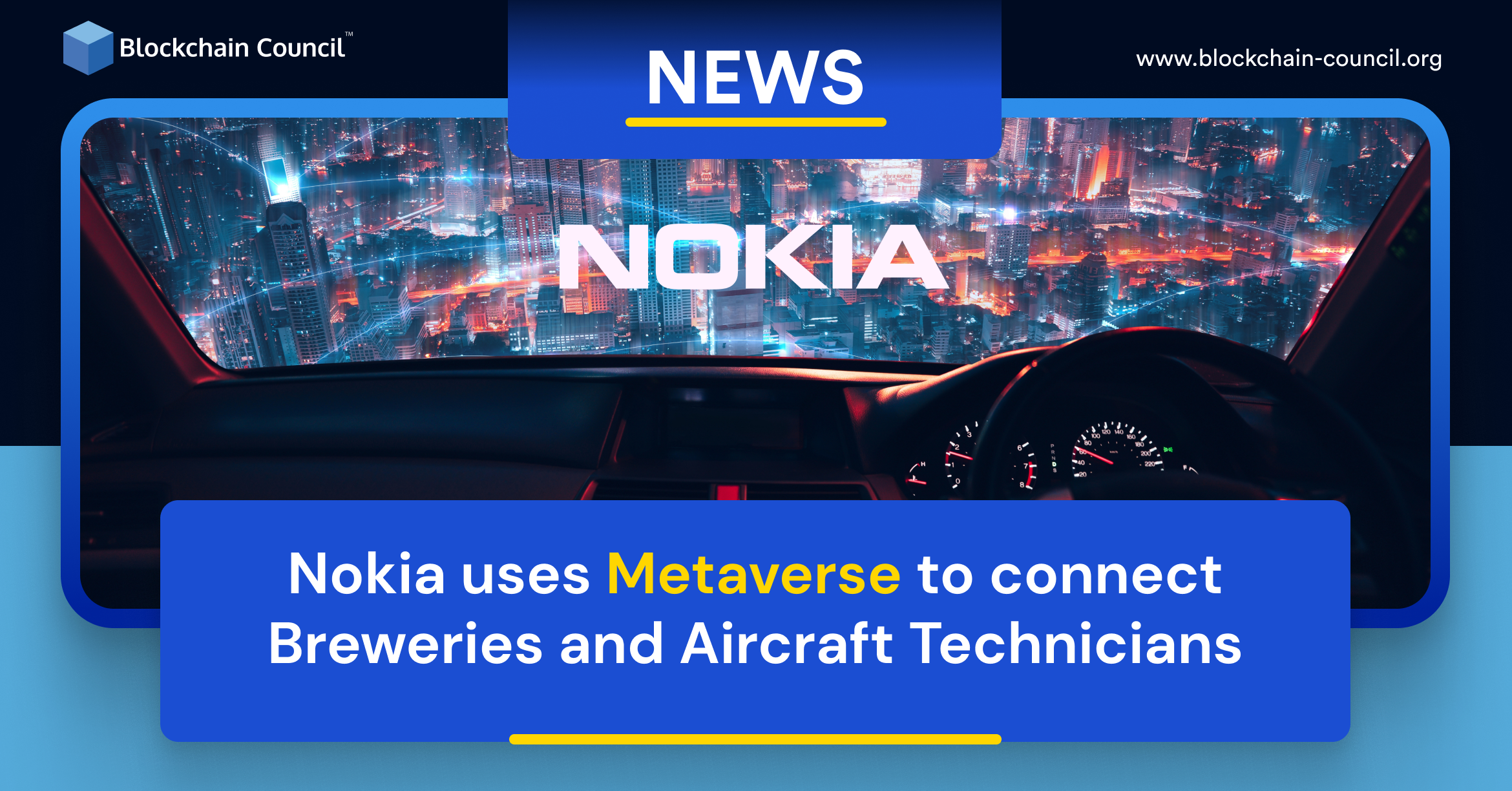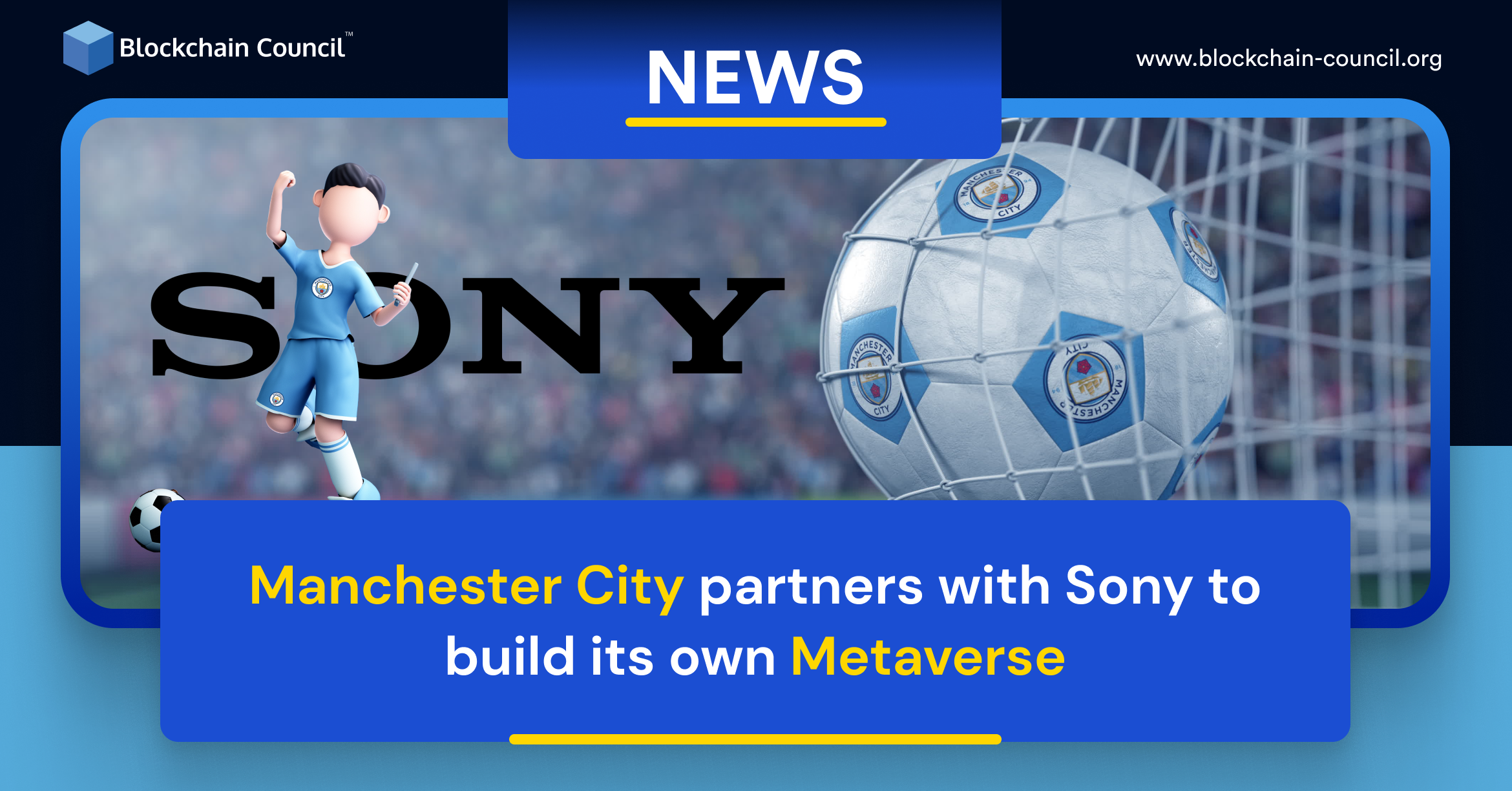
- Blockchain Council
- September 17, 2024
The telecoms infrastructure for Nokia has been looking for different ways to utilize Metaverse technology in aiding workers in remote locations. From aircraft technicians in isolated Metaverse airports to Beer Breweries on the opposite ends of the globe, the firm is building Metaverse-powered solutions for all. For a long time, Nokia has been the primary manufacturer of internet equipment and technology, and now it is expanding to reality-based solutions for businesses. The Chief Technical Officer at Nokia, Robert Joyce, said, “Nokia set up two labs last year to really look at the Metaverse and the technologies that underpin the Metaverse.”
In 2022 Nokia started taking collaborations seriously and collaborated with an Australian University to build a 5G-connected microbrewery using Metaverse. Researchers from the brewery tech lab at the University of Technology Sydney used augmented reality to develop this microbrewery system with joint research with a twin facility at Dortmund University, Germany.
He added, “They actually do joint experiments where they brew beer, they change the process, the temperature, the timings, the volumes, the recipes […] and they feed back all of that brewing process into the digital twin,” Furthermore he said.”Then they can actually simulate brewing in the digital twin so they can perfect the beer in the digital space.” He said that Nokia has already started a training facility for aircraft technicians working at remote airports using Metaverse in South Australia.
“We worked with a company that had a virtual Cessna aircraft […] You’ve got a Cessna in front of you, and then you have an audio instruction in your ear to tell you how to change the wheel, or change a part on the engine,” said Joyce.
“We had a 5G connected Microsoft HoloLens, and we were able to instruct people on how to service a Cessna using augmented reality in this case.” Earlier, Nishant Batra, the Global Chief Strategy and Technology Officer at Nokia, told WEF (the World Economic Forum) that it would have the biggest immediate impact on industries rather than the consumer market. He wrote on 13 Jan, “Ports have begun using digital twins to track every container on their docks, no matter how deeply they are buried in stacks. Aerospace companies are building engines and fuselages in the digital world to simulate exactly how an aircraft will fly – long before they took its first mechanical part.”
The industrial #metaverse promises to fundamentally change the way we work, whilst driving productivity, boosting safety, and enabling new levels of flexibility.
Find out more ahead of Davos in this blog from Nokia’s Nishant Batra. ▶️ https://t.co/BiDWssGfm0 @wef #WEF23 pic.twitter.com/d6Jfg5mk2G
— Nokia (@nokia) January 13, 2023
Joyce also agreed that he does not see a consumer Metaverse boom until 2030. He added that by the end of next year, the revenue spent on the industrial Metaverse would be 5 times compared to the enterprise Metaverse development. He said the technology had not arrived yet, and the current infrastructure is clunky, referring to the currently available consumer-focused Metaverse devices.
He said,
“It’s not the best experience to have a Quest 2 on your head for a couple of hours, and it’s not until people get to the augmented reality wearables that are comfortable [and] mass-produced. We see this three or five-year lag before we actually see massive uptake in consumer virtual reality or augmented reality services.”
Related: Step-by-Step Metaverse Beginners Guide
On the question of Blockchain technology’s part in the future of Metaverse development, Joyce said that he is optimistic about Blockchain technology, and it will be a key requirement for transferring digital assets or payments in the Metaverse. He said,
“If I was going to buy a house next to Snoop Dogg’s and want to ensure that it couldn’t be lifted and shifted and copied, that’s where Blockchain is quite useful in terms of maintaining uniqueness in a digital space.”
However, he is not a firm believer in Blockchain as a necessity in all applications. He concluded, ”It’s not an essential underpinning technology for the Metaverse, but I’m glad we’ve got it […], and it will be used in the Metaverse.”






































































 Guides
Guides News
News Blockchain
Blockchain Cryptocurrency
& Digital Assets
Cryptocurrency
& Digital Assets Web3
Web3 Metaverse & NFTs
Metaverse & NFTs
